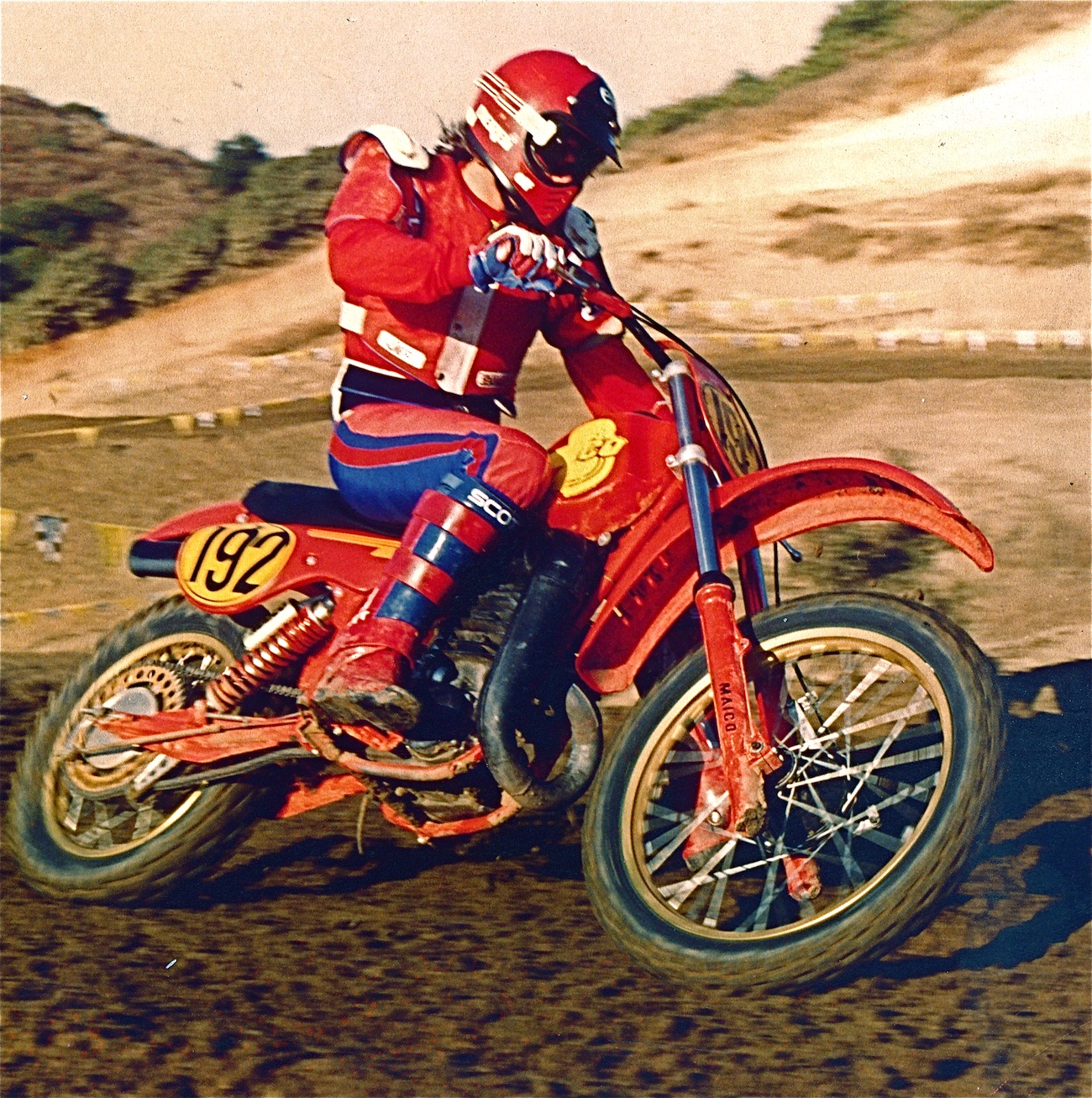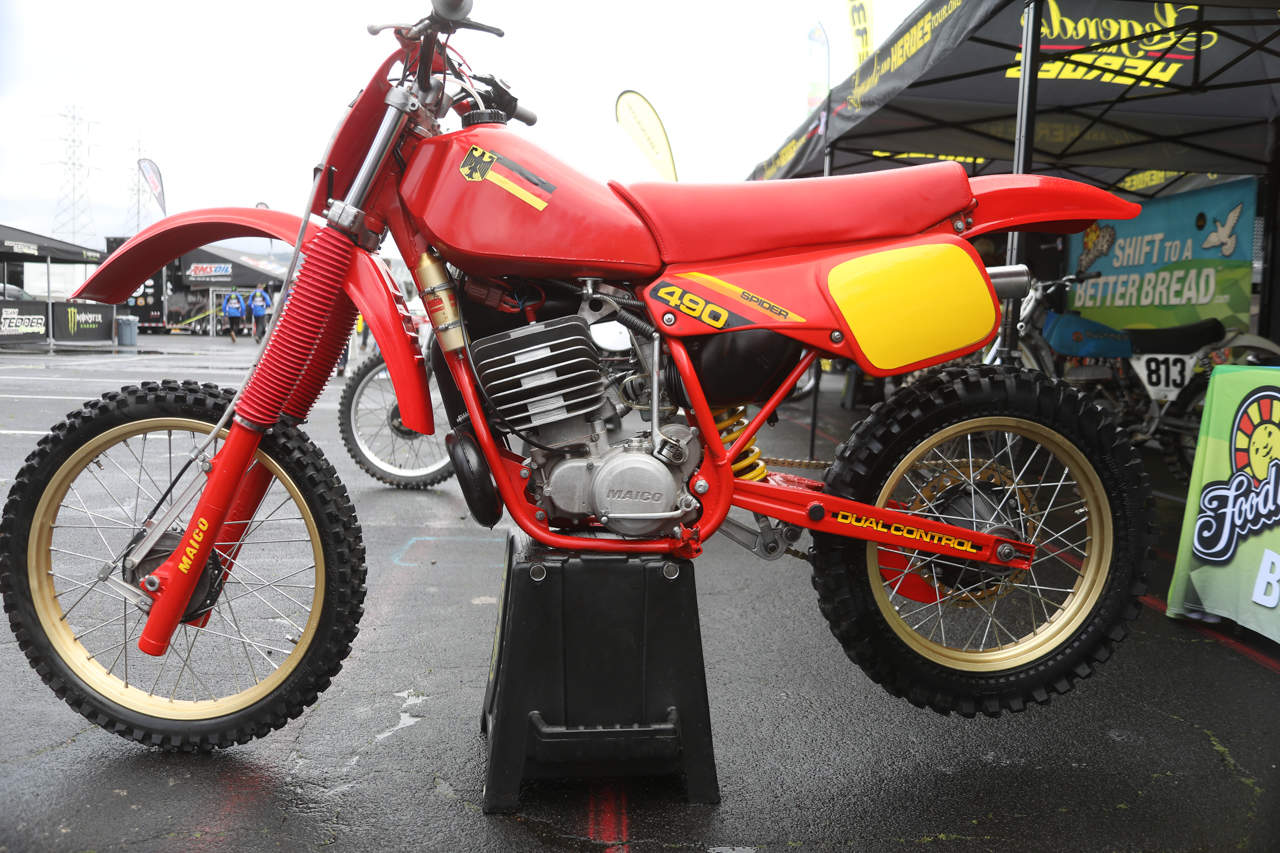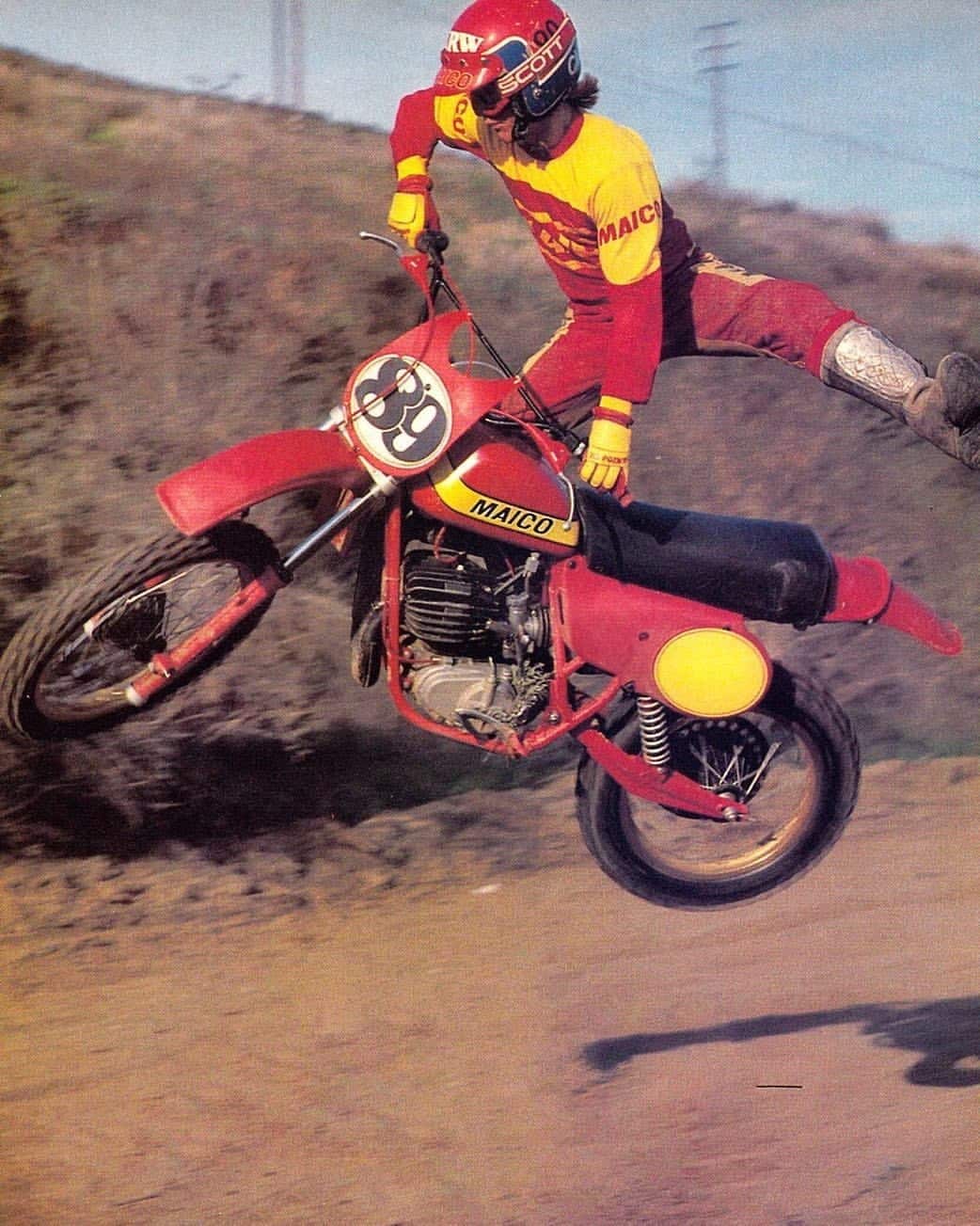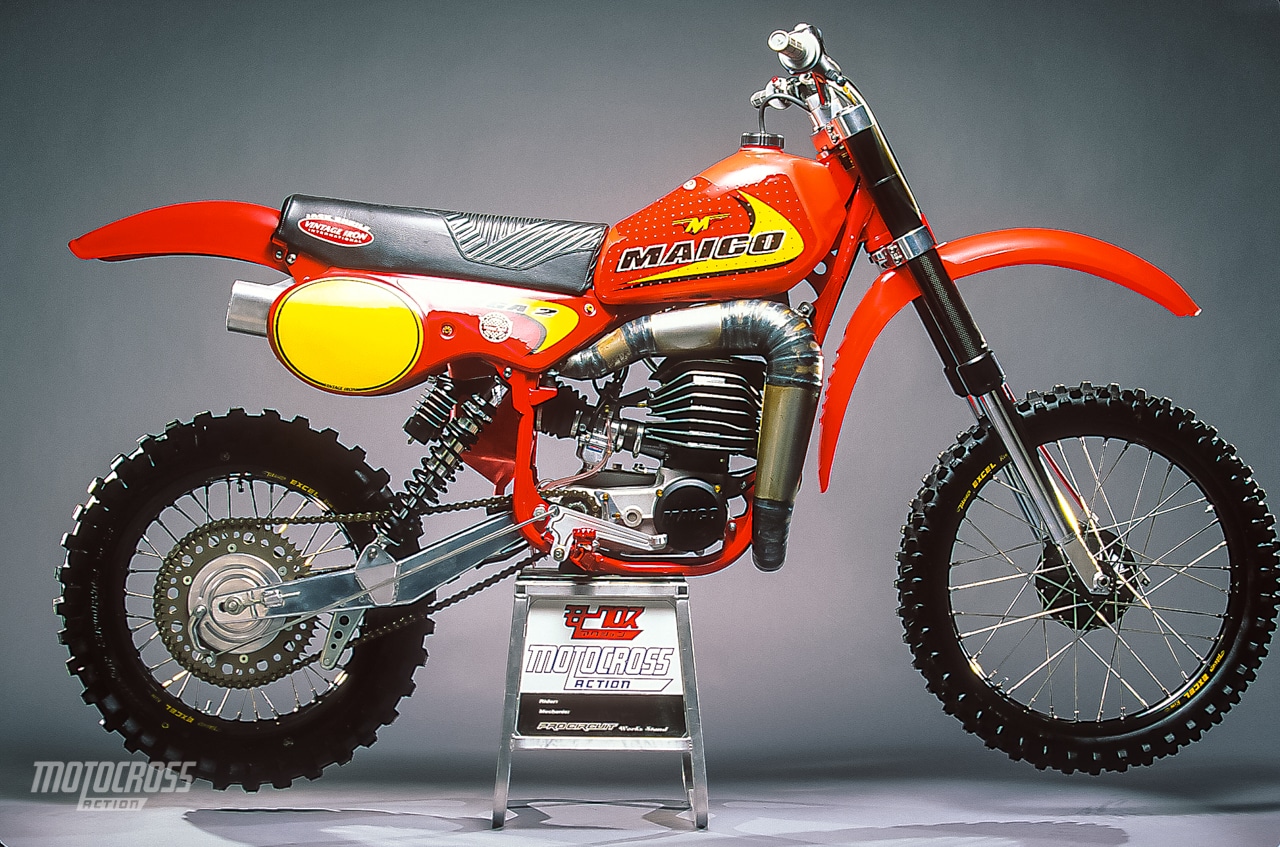TWO-STROKE TUESDAY: THE BEGINNING OF THE END OF MAICO
THE BEGINNING OF THE END OF MAICO MOTORCYCLES
In 1981 the Maico 490 was considered to be the best bike on the track, and in subsequent years one of the greatest motocross bike of all-time, but by 1983 the Maico firm was on verge of collapse. A family company with 40 years under their belt was coming apart at the seams. The biggest problem was infighting between the family members of the Maisch Family. The bitter feuding set the stage for a spectacular crash. Maicos had a good reputation throughout their years and were highly competitive bikes, but all that would change in 1982.
The switch from the twin-shocks of the 1981 Maico Mega-2 to the single shock required to stay competitive in 1982, saw an unprecedented number of shock shaft breakages on the cheap Italian-made Corte Cossa single shocks. Loyal Maico riders scrambled to find a replacement shock, most switching to an Ohlins with a stouter shock shaft, but the real problem lay in Maico’s overly aggressive rising rate linkage. Thus, 1982 was a disastrous year for Maico—they went from the best bike made to a mechanical nightmare in a single model year.
 This is a 1981 Maico 490 Mega 2 at Saddleback with Jody Weisel at the controls. The Macio 490 engine was magic on Saddleback’s hard-pack dirt.
This is a 1981 Maico 490 Mega 2 at Saddleback with Jody Weisel at the controls. The Macio 490 engine was magic on Saddleback’s hard-pack dirt.
In 1983, Maico released three models of the 490–motocross, desert and Enduro versions. The motocross version, which was called the Spider, had a four-speed transmission and a new engine. However, when the all-new Maico models were unveiled, people didn’t swarm to the dealerships to get their hands on them as they had in the past. The problem was that the brand had lost its mojo and the buying public didn’t want anything to do with a bike brand that looked like it was on the verge of collapse. The bitter Maisch family battles were no help and the bikes began to suffer even more mechanical failures. Maico always had wheel problems, but Maico racers simply sent their wheels to Wheelsmith Maico to get cross-six lacing. In 1983, the rear hubs were exploding and transmissions were coming apart. People were furious when their expensive Maicos failed.
 This is a 1983 Maico 490 Spider. Transmission and hubs failures were common.
This is a 1983 Maico 490 Spider. Transmission and hubs failures were common.
While Maico tried to warranty the parts, the damage had been done. Their reputation was out the window. In 1983, Maico faced bankruptcy for the first time since Otto and Wilhelm Maisch started building motorcycles after the Second World War. Rear shock warranties and bad transmissions had shaken the American market and bike sales fell. These hardships forced the Maico brand into receivership by the German government (who refused to allow them to down-size, which meant they kept the same workforce even though sales had fallen off the cliff).
As the family fought over the shambles of the firm, the American distributor tried to save his business by joining forces with the sons of the Maico founder Wilhelm Maisch, Peter and Hans, by relabeling the bikes as M-Stars (to avoid the legal complications that the family had put the brand’s name in). It was too little too late, as the fast changing pace of motocross allowed the Japanese manufactures to moved in fast and take all of Maico’s marketshare. The once great brand was dead in the water.
M-Star struggled on through 1986, but the bloom was off of the Maico rose. Since the demise of the original firm, the brand has bounced around from Germany to Holland to England, but these salvage operation were always underfunded and under-developed.
 Danny “Magoo” Chandler helped make the pre-1982 Maicos famous.
Danny “Magoo” Chandler helped make the pre-1982 Maicos famous.







Comments are closed.